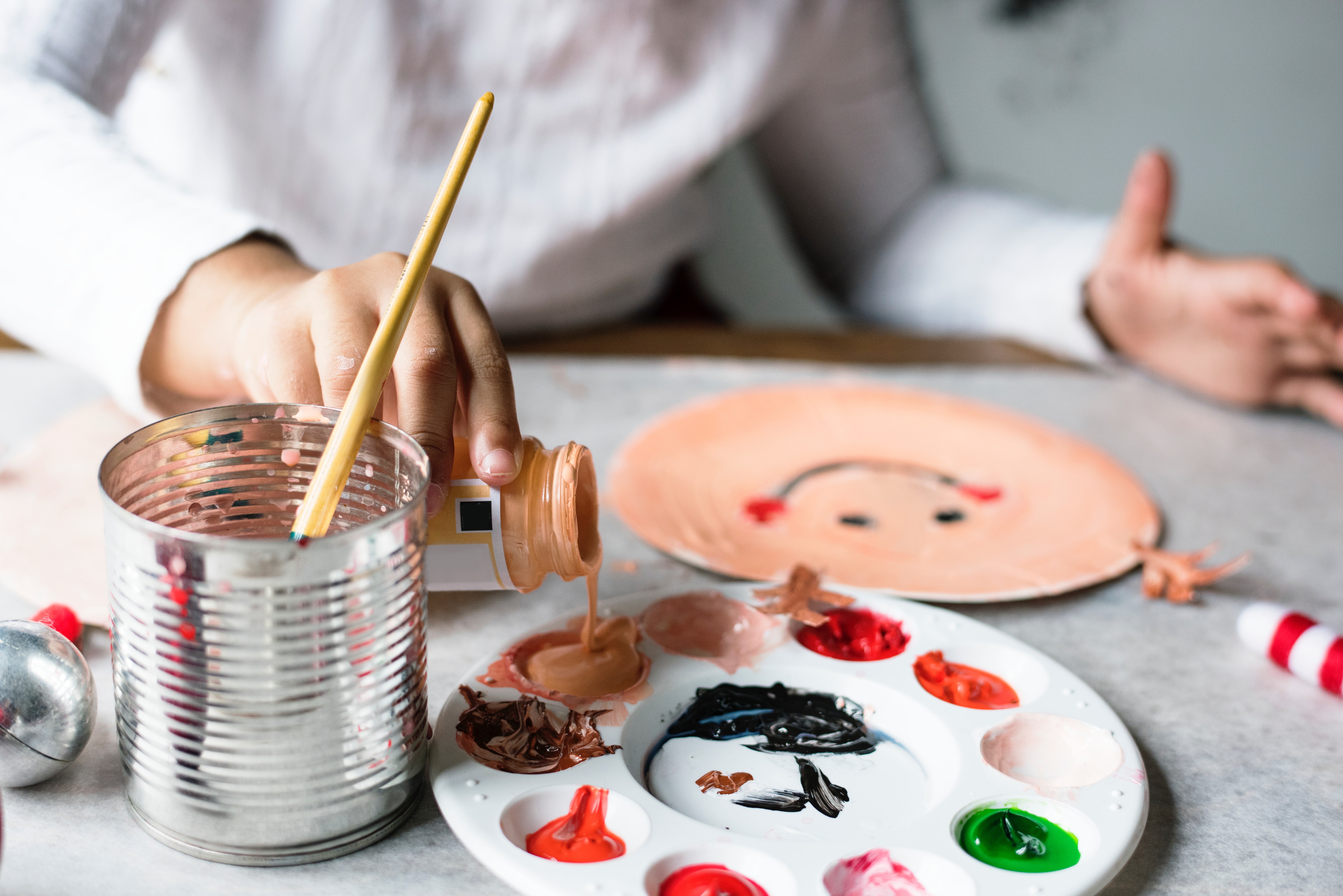“Not a day without a line” is a famous quote, (presumably by Pliny the Elder – a roman, author, naturalist, and natural philosopher), that I try to adhere to in my drawing practice. While it is originally written relating to writing, it converts very well to a drawing practice. Cause if there is one thing I know about how to improve your drawing skills, it is the fact, that it takes practice, and preferably lots of it! I personally aim for doing some drawing every day. But I do have a challenge when it comes to spending a lot of time on it, so I try to find efficient ways of practicing, which is what I’ll be talking about in this article.
The Time Issue – Some Thoughts About Practicing

I am a pretty busy person… I have a family, a job, an education, and music that all take up quite a bit of time… (All that good stuff that usually comes with being a grown up… 😉 ), so sitting down for a full on drawing session is not always possible for me. Because of this, I have some thoughts about practicing, and getting the most out of my time. If you can relate to this issue, then read on, my friend.
Daily Drawing Exercises
The first step is to turn to my arsenal of very awesome and simple daily drawing exercises, that I have picked up along the way. When I apply the principles from this article to them, I am able to make good progress, even with very little time. Fortunately there are plenty of these exercises. Do a quick Google search, and you’re good to go. I also have a collection of my favourite exercises, that you can find right here. And I am constantly expanding on it, so keep checking back!
But for now, here are the principles, that I try to stick to, in order to progress my drawing skills as quickly as possible.
Kaizen – Baby Steps Become Giant Leaps
By Majo statt Senf [CC BY-SA 4.0 (https://creativecommons.org/licenses/by-sa/4.0)], from Wikimedia Commons
Kaizen is a Japanese word, and a strategy, that is characterized by continuous small improvements on a daily basis. It has proven itself VERY effective, and as such it has been adapted widely all around the world in creative endeavours such as drawing, painting and playing, as well as in coaching, psychotherapy, health industries, banks, corporations etc.
Besides being very effective, it is also very easy to implement, and it is the first principle that I try to keep in mind in regard to my practice.
The idea in a nutshell, is that small daily steps add up, and amounts to big improvements in the long run. And it works! I can personally attest to that. I have used this principle for a good number of years, and it has helped me tremendously.
In fact most teachers will tell you that 15 minutes every day is a lot more beneficial for the development of skill work (any kind, not just drawing) than two hours once a week. The reason for this is the fact, that by revisiting the movements involved daily, you’re ingraining them into your nervous system, and thus your muscle memory. And that is absolutely crucial for applying that skill. Besides, it also helps to build a habit of daily drawing, because it’s a lot easier to commit to 10 or 15 minutes daily, than to an hour.
Work Smart – Not Hard

This is another one of the principles that I try to adhere to. In most of what I do, including my daily drawing practice. I believe there is a lot to gain, by being smart about how I go about my daily life. And if I am to make any gains with these short practice sessions, it is essential!
Have you ever heard the phrase “practice makes perfect”?
-Don’t actually answer that… Of course you have! 😉 -I pose it as a rhetorical question, because it’s one of those things that we all heard so many times, that we stopped thinking about it a long time ago. But I will actually go out on a limb here, and claim that it is… Well not false, as such, but at least highly inaccurate! Allow me to explain:
When we are talking about something that requires fine motor skills – such as drawing, playing an instrument, or anything similar, we are practicing our before mentioned muscle memory. And the muscle memory is dumb! It doesn’t think! It only remembers what you do, NOT what you think or tell yourself. So if you make mistakes repeatedly, you are not improving upon those mistakes, you are ingraining them into your muscle memory, in essence you are practicing those mistakes!
Mindfulness in Your Drawing Practice
As an example, if you are practicing drawing circles, and you go forward too quickly, drawing circles that resemble crooked ovals more than circles, then that is what you ingrain in your drawing hand! So in actuality you are practicing a crooked oval, and NOT a circle… You should slow down, be mindful about your shortcomings, and draw your circle in a tempo and a manner that allows you to draw it as perfectly as possible. (As an added bonus, certain drawing exercises can become almost like actual mindfulness exercises, when you get into the repetitive, slow motions of them. Kind of like mandalas).
... As perfectly AS POSSIBLE!
Now, I said practice in a manner that allows you to draw your circle as perfectly AS POSSIBLE. And that’s an important point, cause drawing a perfect circle is difficult! And it takes practice… So if you’re not supposed to ever draw an imperfect circle, how are you ever going to improve, right?!? 😉
The point is that it is important to be mindful about it, notice where your weaknesses are, and try to improve upon them. What you’re not supposed to do, is practice the same imperfections again and again… Cause that’s the way they get ingrained into your muscle memory.
The Pareto Principle – The 80/20 Rule
The Pareto Principle is another theory that has found use in MANY areas, as varied as economics, science, sports etc. It states that for many events roughly 80% percent of the effect comes from 20% of the causes. I am a big believer in this! And it ties in very well with the principle of working smart.
Now this doesn’t mean that I believe one should only do 20% of the work AT ALL TIMES, and just be happy with that! There are definitely times, when you should bust your butt, and work hard. But as far as practicing your skills go, it is very useful to identify that crucial 20%…
Exercises vs. Actual Drawing – Remember the Joy
The principles that i have outlined in this article, are meant to improve your skills, and to maximize efficiency in that aspect. It’s a very goal oriented approach, that works well in regard to saving time and staying productive, while improving your skills as quickly as possible.
BUT… DON’T FORGET TO ENJOY IT, AND HAVE FUN!
Drawing is a fantastic thing, and it is a creative outlet, unlike anything else. It allows you to see and interpret the world in a new light and in your own way. It allows you to capture moments and pictures with your own emotions embedded, to create your own vision. To play with shapes, colours and sizes, and so much more!
These are absolutely fantastic attributes, and while it is exciting and useful to go into the nuts and bolts of the whole thing, there is also the danger of almost forgetting the pure joy of it. So just keep in mind that the drawing exercises should be a tool for developing your skills, which in turn will allow you to have a more open channel for your artistic endeavours.
To Make Good Art, We Have to be Willing to Make Bad Art
This quote from Julia Cameron’s book “The Artist’s Way” is a bit of a mantra to me, and I consider it a very important part of developing as a creative person.
To improve your drawing skills it’s important to be focused, as I’ve talked about in the previous paragraphs. But sometimes, in order to open your creative channels, you just wanna let loose, be bold, and just draw… Whatever comes to mind, and comes out from your hand and your pen. Sometimes this will result in “poop on paper”, and sometimes it will result in what many call the “fortunate accidents”, and you draw something really cool. The important thing is that you keep drawing and keep practicing. And as you improve the poop will become less, and you will create cool stuff more consistently.
The Take Away
1) It’s better to do a little bit every day, than a marathon session once in a blue moon.
2) Be mindful about your shortcomings and work on those.
3) Practice slowly and deliberately, and only speed up as you improve.
4) Allow your self to make bad art, and very soon you will find yourself making good art.
If you keep these four principles in mind, short 5-10 minute practice sessions, will still allow you to improve your drawing skills a lot. And of course more time will yield better results, but the same principles still adhere.
Repeating The Good Patterns – An Exercise
Here’s a quick exercise to try out these principles for yourself.
We all know that circles is one of the most basic shapes you need to practice, so let’s work on those.
But instead of just drawing 10 circles, draw ONE! And draw it REALLY well. I mean it! Take your time, and spend maybe one or two full minutes drawing ONE circle. And then trace your line though that circle over and over again, as many times as your pencil, your paper or your patience can handle, which ever gives in first!
If you find it really difficult to draw a decent circle free-hand, there’s also the option of using a compass, to draw a template, and then draw over that.
Now you’re practicing your muscle memory the smart way. Five minutes of this will improve your circle-drawing-abilities way more than 10 or 20 minutes of circles done half-assed. Of course you can repeat this exercise with any shape you like: ellipses, squares, rhombuses etc.
Happy drawing!


You have a very interesting article there. I loved it. I used to draw a lot when I was back in high school. I have not drawn anything for 8 years. That is what happens when life gets too busy. You article just inspired and remained me to get back to it. Thank you for all of the tips. I wish I had this information back then, but I can still use it today. I am going to get myself some pencils. Thank you for sharing.
Thank you so much, Hong!
Yes, I know all about life getting busy! That’s exactly what happened to me. 😉 Still is, but I just decided to make the time to do it.
And no, it is absolutely never too late to get started! Whether it’s from scratch or after a break.
Happy to be able to spread some inspiration!
Thanks for visiting, and thanks for the comment!
Best wishes,
Michael